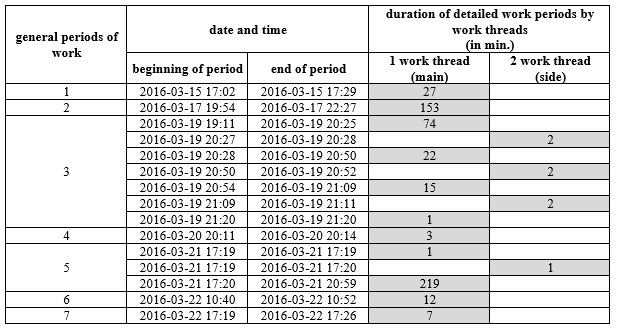Multitasking in human work has been a trending topic for years. I’m sure you try to work this way, but think about how well it works for you. Perhaps this morning you tried to write an email, call your boss, and talk to a colleague behind the desk all at once, while sipping your morning coffee. At the same time, you were reminded that you didn’t give your child the keys and when she comes home, she will be waiting at the door. As your eyes saw your 8-year-old getting wet in front of the house, you tried to calculate how much interest you would earn if you bought inflation-indexed bonds, but with a very low interest rate this year… What came out of all these intellectual and physical activities? Fatigue… Could a robot manager handle such a task?
The challenge to work simultaneously on several tasks arose when such an “ability” began to be demonstrated by digital machines, then commonly called computers. And then the history of analogies came full circle. First, man tried to create a machine that would work similarly to the human brain, but before it succeeded (until now only some symptoms of success can be seen), man reversed the analogy and began to compare his brain to a computer. It’s a bit like the dilemma of what came first, the egg or the chicken… In this case, however, the brain came first!
Now let’s go back to the question of whether an artificial manager could handle your morning tasks. The answer is not simple. To get it, I conducted an experiment a few years ago – a study of the activity of a manager on the example of setting goals and tasks in a project using the theoretical basis, which is the system of organizational size as well as the online managerial tools of TransistorsHead.com.
I conducted the observation from March 15 to 22, 2016 in a group of students of the management specialty at the University of Economics in Katowice. The study involved 43 students divided into 12 groups, each of which had its own “manager” using online management tools. Participants were asked to set goals and define tasks in a project to relocate the headquarters of a fictional creative agency from a small city to Katowice. Participants were given a description of the creative agency’s context and general considerations for relocating the company.
How did the student group managers work? They were always only single-minded! In one moment of time they focused only on one task, and then moved on to the next, then the next. Sequences of such tasks were arranged in threads. One thread had to be stopped in order for the manager to start another, in a moment that thread would be stopped, and the manager would return to the previous one. It looks like a car changing lanes on the highway – it always goes only in one lane, even though other lanes are available. It cannot find itself in several lanes of the roadway at once.
So the answer to my question was simple: if an artificial manager learns from a human how to behave, it will not be able – like a human – to deal with multiple threads at once. The multithreading of an artificial manager can only result from artificial rules introduced at the design stage of an artificial manager, not from simply copying the managerial activities undertaken by a human. The distribution of the time that one of the managers participating in the study spent on two work threads is shown in Figure 1.

Figure 1. Durations of detailed work periods by work threads
If you want to read more about this study, see this article:
Flak, O., Wykorzystanie układu wielkości organizacyjnych do pomiaru aktywności menedżera

